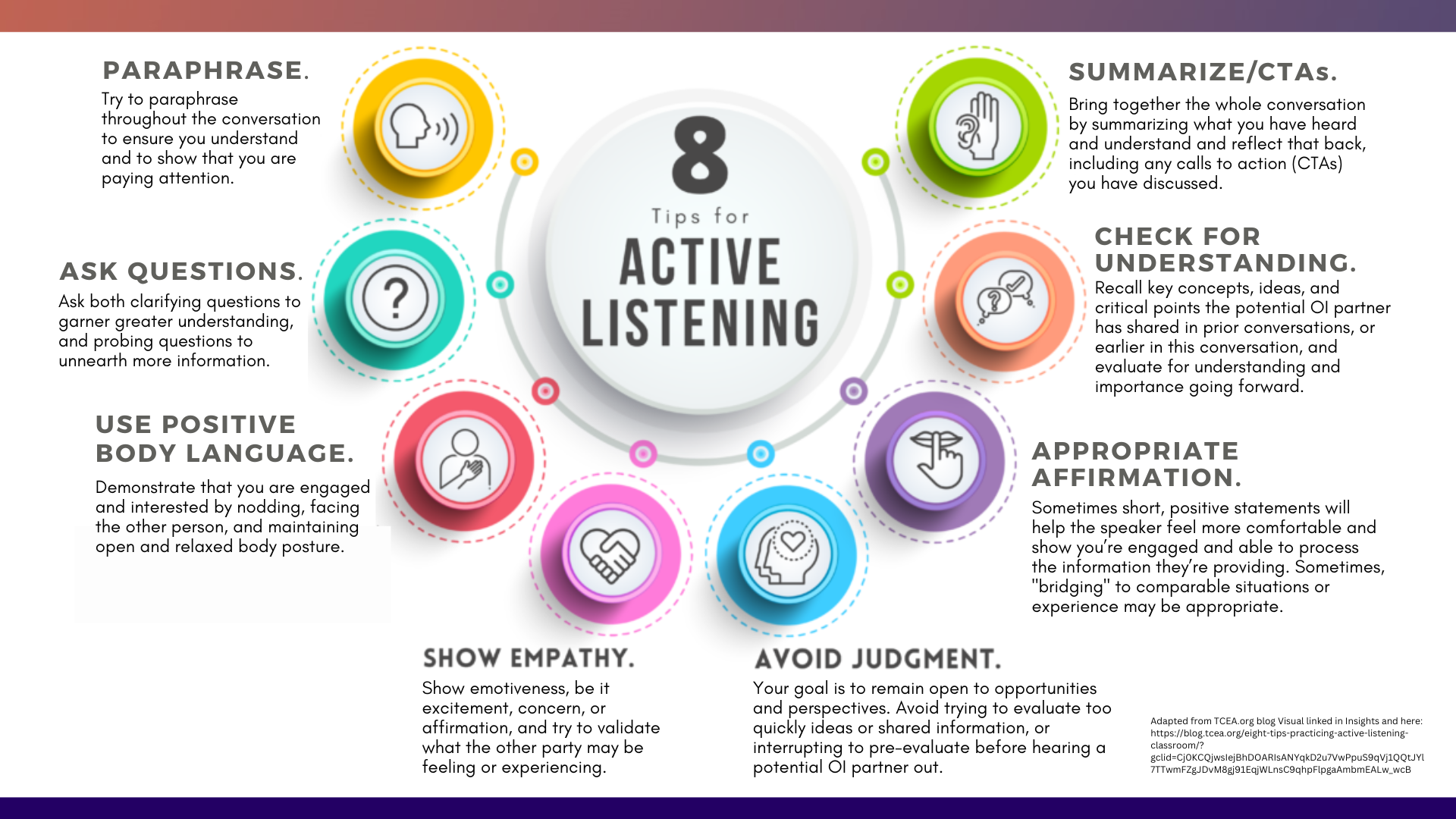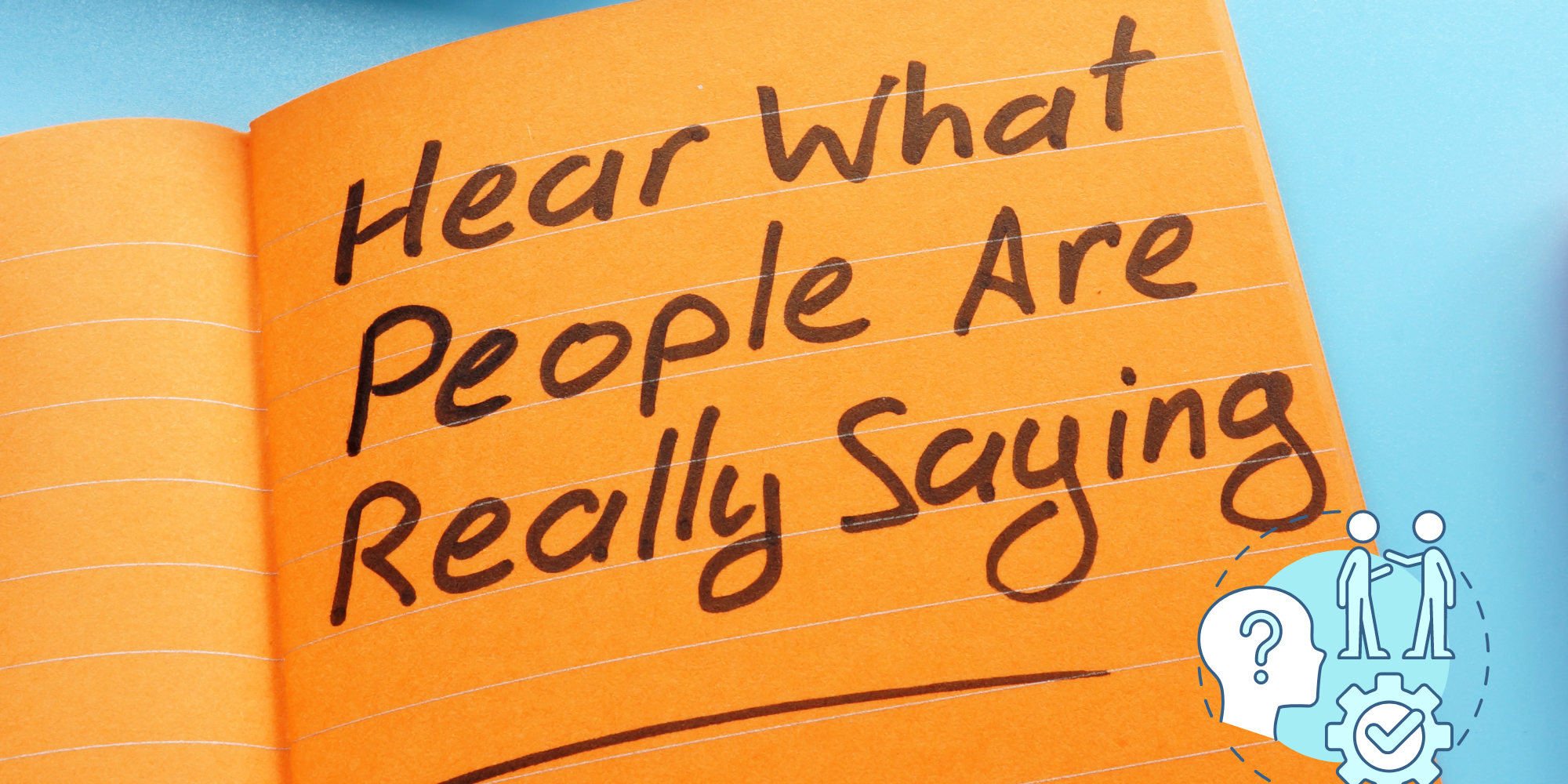We recently worked with a client to deliver training to their biologics team whose responsibilities have shifted significantly when their company moved to an open innovation model. The ask was to assist scientists who were used to working internally in teams and across the company to propel innovation and technologies to build out the kinds of strategic communications skills required to work in their pivot with external partners.
As Resonance Senior Associate, Design & Innovation Jay Chikobe describes, Open Innovation occurs when organizations tap into external resources and sources of knowledge, be it different perspectives, assets, and skills, to deploy innovation with the intent of arriving at better solutions to the challenges they face. This includes working with inventors, startups, labs, companies, nonprofits, and universities who may have a technology or innovation (or sometimes a portfolio of several) in the hopper across all stages of the innovation process that may hold some promise to advancing the home company’s product or process development.
Resonance facilitated a two-day workshop that framed out communications skill refinement participants would need in open innovation dialogue with potential partners. This included facilitated instruction and practice around the importance of delineating partner profiles, improving information messaging flows in “go” and “no go” decisions on whether to partner, and even the basics central to team success generally, including “active listening.”
The latter emphasis may be of little surprise, given nearly every article out there, blog, mainstream, or scholarly, leads with some variation of the question, “What is necessary for private sector open innovation?” Universally, the answer comes in some form of “Active listening is the key.”
What is Active Listening?
Active listening includes the word “active” for a reason. At any given time in conversations, someone is speaking, and another/others are listening. Often in these exchanges, we as listeners may not be fully decoding the conversation for an array of reasons, including external noise that intrudes on the conversation, wandering thoughts (this is natural), or a preoccupation with what we want to say next to such an extent, we are untethered to the words we are listening to in deference to formulating our own.
Active listening requires a dedication to both concentration and authentic, yet strategic engagement as part of an active role of the listener. When company teams are engaging with potential partners in open innovation exploration, negotiations, and implementation, active listening is crucial across all these phases, as well as foundational to internal process efficiency and effectiveness.
What skills do specialists and experts need to acquire and develop as part of partnership development in open innovation ecosystems?
8 Active Listening Tips and Skills in Open Innovation Partnering
It is widely accepted that teams charged with forging Open Innovation (OI) partnerships as part of an organization’s commitment or pivot to sourcing ideas and acquiring technology and innovations from external actors to solve problems or improve existing capabilities, must upskill their communications approaches to be successful. Central to OI communication is a commitment to both adopting a continuum of openness grounded in flexibility and dynamism, with the ability to execute strategic, managed exchanges of information over time to fulfil organizational objectives. Active listening is central to this duality.
A clear and compelling visual on Active Listening accompanied a blog on active listening in the classroom written by Dr. Diana Benner for the Texas Computer Education Association (TCEA), which is linked with attribution, is adapted below for those engaged in Open Innovation in the private sector who are immersed in exploring and leveraging OI Partnership opportunities and relationships. It serves to help us highlight and discuss the 8 key skills (and thus tips) for active listening in exploring OI partnership opportunities.

Skill (Tip) 1. Develop the Ability to Paraphrase
Paraphrasing is an essential skill in active listening. It requires of us the ability to reflect what we hear across a conversation in a way that both affirms we are listening (which helps us build trust), and helps the speaker know we understand what they are communicating before they move on to the next point. These are typically brief, yet affirming statements, (e.g., “I see, so it sounds like you have made significant progress on that stage of research, then.”). Paraphrasing techniques can be developed outside of formal OI interactions by practicing with friends and family, as well as team members, so that it becomes a natural inclination.
Skill (Tip) 2. Learn to Ask Clarifying and Probing Questions
Active listening requires listeners to pose questions when appropriate and timely. These typically take two forms. Clarifying questions address any confusion we might have about information that has been or is being shared in the conversation (or even a prior one). They are designed to gauge an understanding of the communication to ensure all parties in the dialogue are on the same page with information being conveyed. Probing questions are different. They are designed to garner additional information that might not have been included, or to go deeper on a point to help the listener ascertain data or knowledge that is critical to their own needs and goals around innovation. Both frames are important in active listening and learning when to ask them (including timing) is a skill that can be developed.
Skill (Tip) 3. Use Positive Body Language
Using positive body language is important in in-person meetings (and often easier with less room for misinterpretation), and in the likely online meetings using the array of video-based meeting platforms. Listeners can demonstrate they are engaged by nodding, facing the other person, and maintaining open and relaxed body posture. Maintaining regular, even interval eye contact is very important.
The discussion around positive body language was among the most engaging in our workshop for several reasons. First, our technology (screen) setups often mean we are not looking straight into the camera. Although we may be accustomed to this, not looking at the screen means you lose important eye contact, which contributes to trust building and a sign of attentiveness. We also discussed the realities of necessary multi-tasking to get all our work done, which may be sending the message we aren’t listening when it is obvious on screen our attention is diverted to answering emails or responding to “chat” dings. Participants discussed purchasing external cameras and good lighting, finding ways to balance looking away and looking at the screen, and even a bit of nodding that can convey more active listening than the resting listening face.
Skill (Tip) 4. Demonstrate Empathy
Active listening requires listeners to show some emotiveness when interacting with potential partners in Open Innovation ecosystems. One of the best ways to do this is to imagine what it might be like to be in their shoes and anticipate this mindset in advance. Company OI and partnership experts should try to remember that potential partners often have significant time and emotional investment in the solutions they are bringing to the table. Selling a technology or solution or forging a partnership with a big company may be life-altering for some external partners. Finding ways to convey excitement, genuine concern, or affirmation to validate what the other party may be feeling or experiencing can go a long way in relationship building. The key is to keep it real and not mislead others into believing they have a better outcome than they might by the end of the process.
Skill (Tip) 5. Avoid or Defer Judgment
This skill needs a bit of definitional clarity. “Judgment” does not mean in this context harsh critique or criticism. In terms of creativity, innovation, and even partnership forging, deferring, or avoiding judgment, means remaining open in active listening, and fighting off the inclination to render your assessment of whether something is good, or bad, can work, or can’t, fits a need, or doesn’t. Deferring judgement requires of the listener a willingness to remain open to possibilities and potentials and not prematurely write off a potential solution as unworkable, too expensive, or _______ (fill in the blank of cons).
The goal of deferring judgment is to remain open to opportunities and perspectives and avoid trying to evaluate too quickly ideas or shared information or interrupting to pre-evaluate before hearing a potential OI partner out. This is a necessary but really challenging skill to develop (our workshop participants identified this as a common skill deficit). However, if mastered, some of the more innovative solutions may remain on the table that are worth additional attention and pursuit.
Skill (Tip) 6. Offer Appropriate Affirmation
We all have words we use when in lieu of nodding to share with someone in conversation that we have heard what they are saying. Slightly different than paraphrasing, appropriate affirmation means offering positive statements to let the speaker feel more comfortable and to show that you are engaged and able to process the information they are providing. Sometimes this might simply be an “Ah, yes; I understand,” or “I see how that might have frustrated you.” Sometimes it means “bridging” to others by sharing similar experiences (while being cautious to not co-opt the dialogue to focus on that and the listener’s prior challenge or experience).
Skill (Tip) 7. Before Closing, Check for Understanding
There is a pre-conclusion step in dialogue with potential partners that is important in communication in Open Innovation. It requires a brief recall of concepts, ideas, and critical points that the potential OI partner has shared in prior conversations, or earlier in the conversation at hand, with a goal of evaluation for understanding and prioritization in next-steps. This is not the same as paraphrasing, which is designed as a placeholder touchstone. Rather, this skill serves to mirror core points and information that needs to be assessed and summarized before next steps are determined, and it may include a return to some clarifying questions if there are existing information gaps that may serve as barriers to the next dialogue or stage in the process.
Skill (Tip) 8. Summarize and Clearly Communicate Calls to Action (CTAs)
Once all parties have clarity of understanding, it’s important the content and summary of the meeting and dialogue this is reflected back, including Calls to Action (CTAs) that have been discussed or need to be established is an important and final step in OI partner communications. This stage often requires solid facilitative skills, particularly as it becomes obvious the conversation is winding down and people may naturally tune out as they prepare to move on to their next task of the day. This is an opportune time to detail what happens next, and to address expectations of further communications about process next steps. Managing expectations relies on nuanced active listening skills along the way.
Active Listening Central to OI Development, Implementation, and Scaling
Private sector integration of Open Innovation models that bring in external resources and solutions to existing challenges can be incredibly valuable to all parties involved. But achieving successful OI identification, development, implementation, and scaling requires communication at every step of the process, and challenges such as competing goals, knowledge gaps, diverging or mismanaged expectations, lacking resources, can throw even good communication off kilter.
Active listening is an absolute necessity in communication across every stage of partnership exploration and development. For those who are more comfortable with tech, innovation and solutions than they are people interactions, we recommend building a foundational skillset that includes Active Listening as part of formal OI processes and interactions.


